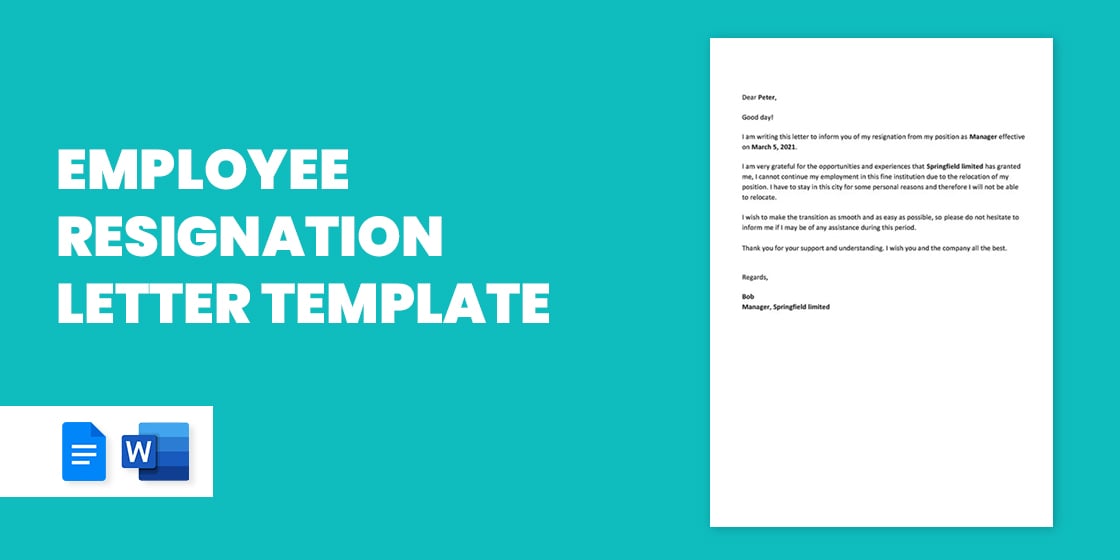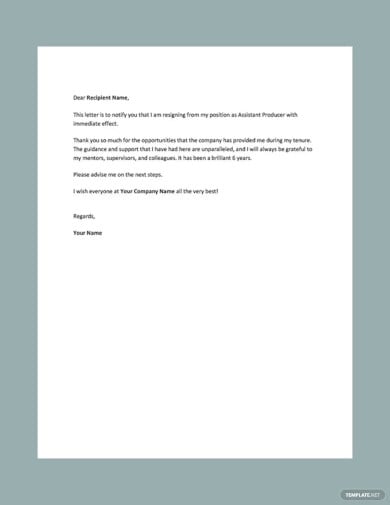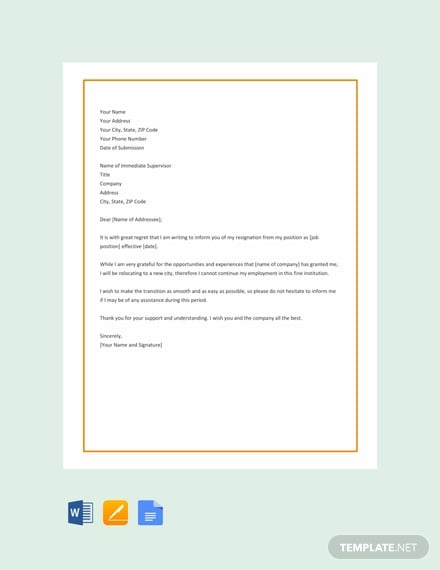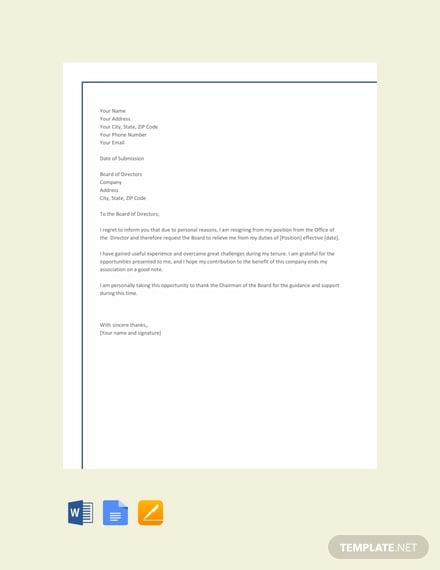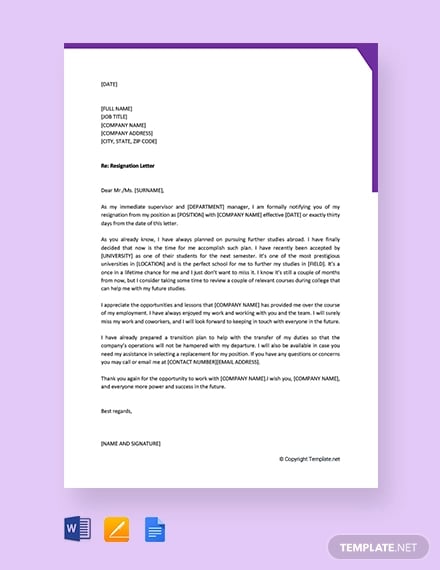Employee Resignation Letter Template – 13+ Word, Excel, PDF Format Download!
What exactly would make you write an employee resignation letter word? Well, there are many reasons why, as a loyal employee, you would want to bid your employer goodbye. But, a Email Resignation Letter in PDF is often a very delicate letter; you only write this piece when you are sure you have reached your limits as far as your current job is concerned. You can also see more on Nurse Resignation Letters.
Simple Employee Job Resignation Letter Template
Professional Relocation Resignation Letter Template
Printable Director Resignation Letter Template
Office Employee Resignation Letter To HR Template
Employee Resignation Letter to Manager Template
Company Employee Work Resignation Letter Template
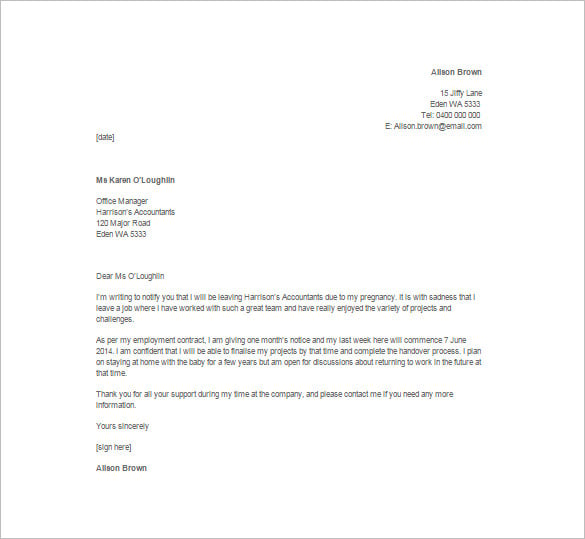
The pregnant employee resignation letter template is a simple and delicate resignation sample letter which is used by pregnant women serving their one month notice before resigning from the job to take care of the baby.
Bank Employee Resignation Acceptance Letter Template
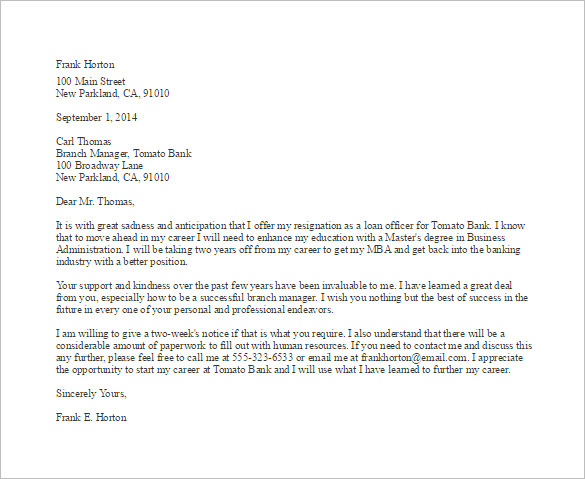
The bank employee resignation letter sample template is a straight forward resignation letter template that explains the reason in full detail in the simple letter which made the employee decides to resign.

ccinc.org | The unhappy employee resignation basic letter template is a simple and useful template that gives the choice of using the type of writing that the employee must prefer for the individuals case from different types of sample. You can also see more on Coach Resignation Letters.
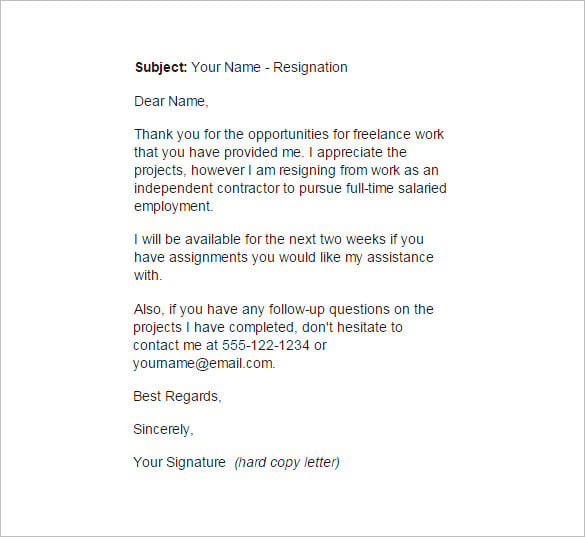
The contract employee resignation letter template is a “to the point” resignation letter mainly useful to freelancers and employee on contracts that explains the end of term as the reason of resignation.
Employee Resignation Letter with Notice Period Template
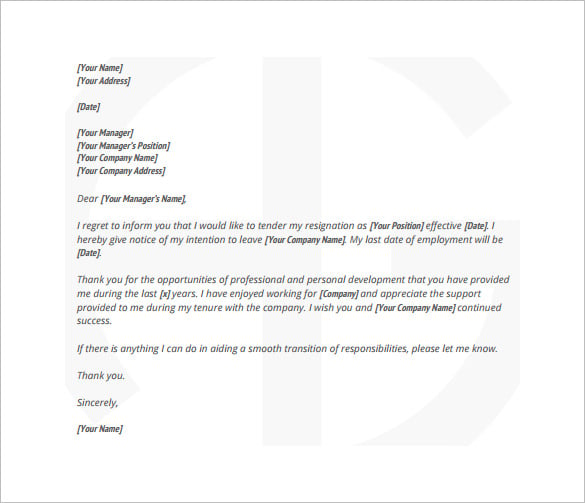
allemano.ca | The employee resignation letter with notice in PDF format is a simple resignation letter that is ready to be sent to the employer. After adding the important details of the employee and employer, the printable letter can be used.
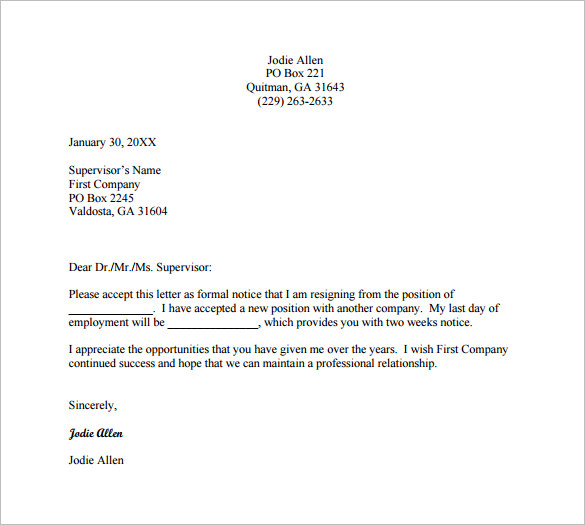
wiregrass.edu | The employee resignation letter for new position template in PDF format is a small and straight forward resignation letter template that can be used by any type of employee seeking resignation from their jobs.
Employee Resignation Letter for Personal Reason Template
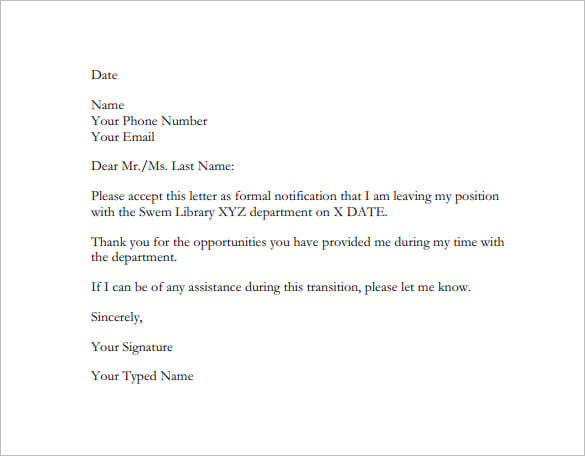
swem.wm.edu
But, make sure the Resignation Letter Layout Templates you write is accurate, precise and simple to read. Short letters excel as the best piece, so take your time and compress all details so that you spend less time writing this piece. You can also see more on Job Resignation Letters.
More in Letters
| 22+ Internal Transfer Letters | 16+ Sample Professional Reference Letter Templates |
| 16+ Banking Cover Letter Templates - Sample, Example | 18+ Sample Employment Letters |
| 54+ Sample Business Letters - DOC, PDF | 14+ Sample Behavior Warning Letters - DOC, PDF, Apple Pages, Google Docs |
| 11+ Sample Nursing Resignation Letter Templates - PDF, DOC | Resignation Letter Templates - 16+ Free Word, PDF Format Download! |
| 15+ Letters of Recommendation for Graduate School - PDF, DOC | 13+ Employee Reference Letters - Samples, Examples |
| 10+ Sample Retirement Resignation Letters | 14+ Free Thank You Letter To Teacher - PDF | Word | Apple Pages | Google Docs |
| 54+ Simple Cover Letter Templates - PDF, DOC | 15+ Business Letter of Intent - Word, PDF |
| 19+ Service Termination Letter Templates - PDF, DOC | 19+ Guarantee Letter Templates |
| 50+ Simple Resignation Letters | 7+ Sample Rent Increase Letters |
| 12+ Letter of Recommendation for Student Templates - MS Word | Apple Pages | Google Docs | 6+ Bonus Award Letter Templates in PDF |
| 2+ Merit and Bonus Letters Templates in PDF | MS Word | 15+ Sample Landlord Reference Letter Templates |
| 6+ Audit Findings Letter Templates in PDF | MS Word | 15+ Audit Confirmation Letter Templates in MS Word | PDF |
| 10+ Audit Engagement Letter Templates in PDF | MS Word | 13+ Recruitment Letter Templates in PDF | MS Word |
| 8+ College Recruiting Letter Templates in PDF | MS Word | 14+ Sample Director Resignation Letters |
| 12+ Employee Appointment Letter Templates | 5+ Logistics Cover Letter Templates in PDF | MS Word |
| 28+ Letterhead Templates - PDF, Word, AI, EPS | 12+ Sample Rental Reference Letter Templates in Word | Google Docs | Apple Pages | PDF |
| Offer Letter Templates - 17+ Word, PDF Documents Download! | 11+ Internship Offer Letter Templates - PDF, DOC |
| 10+ Department Transfer Letter Templates - DOC, PDF | 7+ Sample Income Verification Letters |
| 11+ Termination of Services Letter - Word, PDF Documents Download! | 13+ Sample HR Job Application Letters |
| 15+ Church Resignation Letter Templates | 16+ Promotion Recommendation Letters |
| 16+ Simple Appointment Letters | 13+ Medical Leave Letters |
| 33+ Job Application Letter Templates in Word | 14+ Certificate Letter Templates - PDF, DOC |
| 12+ Sample Medical Resignation Letters in PDF | MS Word | Apple Pages | Google Docs | 8+ Sample Reference Letter for Teacher Templates |
| 32+ Formal Letter Templates - PDF, DOC | 12+ Tenant Warning Letter Templates |
| 10+ Thank You Letter to Recruiter - PDF, DOC | 18+ Formal Request Letter Templates |
| 11+ Auditor Appointment Letter Templates - Word, PDF | 30+ Recommendation Letter Templates - PDF, DOC |
| 7+ Early Retirement Resignation Letter Templates in PDF | Word | 10+ Payment Request Letter Templates - PDF |
| 12+ Sample Business Rejection Letters | 11+ Job Application Letters for Doctor - PDF, DOC |
| 14+ Sample Formal Rejection Letters | 14+ Resignation Letter Formats in MS Word | PDF | Google Docs | Apple Pages |
| 11+ Sample Donation Request Letter Templates | 29+ Job Offer Letter Examples |
| 47+ Resignation Letter Templates - Free Word, Excel, PDF, iPages | 19+ Sample Job Application Letters for Assistants - DOC, PDF |
| 14+ Job Application Letters For HR | 21+ Letter of Recommendation for Student - PDF, DOC |
| 11+ Part-Time Job Cover Letter Templates -Samples, Examples | 11+ Medical Letter Templates |
| 13+ Loan Application Letter Templates | 14+ Sample Employment Letter of Intent Templates - PDF, DOC |
| Essential Guidelines When Writing A Promotion Application Letter | 12+ Real Estate Letter of Intent Templates - PDF, DOC |
| 12+ Solicitation Letter Templates | 10+ Free Resignation Letter Templates Due to Pregnancy in Google Docs | Word | Outlook | Apple Pages | PDF | DOC |
| 22+ Company Letterhead Templates - PSD, AI, Word | 10+ Sample Two Week Notice Resignation Letter Templates - Google Docs, MS Word, Apple Pages |
| Volunteer Thank You Letters - 13+ Free Sample, Example Format Download! | 7+ Sample Personal Reasons Resignation Letters in PDF | Word | Google Docs | Apple Pages |
| 7+ Cover Letters For Internships | 21+ Appeal Letter Examples |
| 10+ Consultant Offer Letter Templates | 12+ Employees Write-Up Templates - Word, PDF |
| 18+ Sample Friendly Letter Formats | 14+ Volunteer Reference Letter Templates - PDF, DOC, Apple Pages, Google Docs |
| 14+ Employee Verification Letters | 12+ Counter Offer Letter Templates |
| 13+ College Application Letter Templates | 17+ Legal Letter Templates |
| 10+ Job Application Letter for Students - PDF, DOC | 13+ Tenant Letter Templates in MS Word , Google Docs , Apple Pages , Outlook , PDF |
| Reference Letter Templates - 29+ Word, PDF Documents Download! | 10+ Performance Warning Letter Templates |
| 8+ Membership Application Letters | 10+ Free Relocation Resignation Letters in PDF | Word | Apple Pages | Google Docs |
| 25+ Transfer Letter Samples | 14+ Contract Offer Letter Templates |
| 13+ Sample Director Appointment Letters | 38+ Payment Letter Templates |
| 29+ Sample Free Letter of Intent Templates - PDF, Word | Complaint Letter - 37+ Free Word, PDF Format Download! |
| 10+ Writing Templates MS Word 2010 Format Free Download | 9+ Trainee Appointment Letters |

